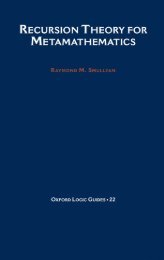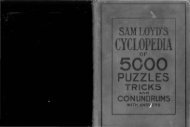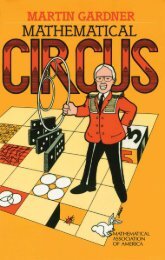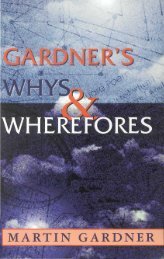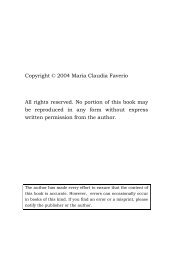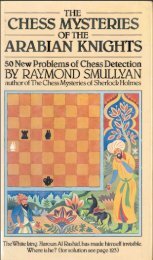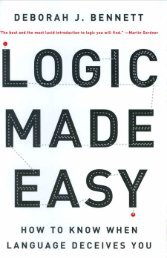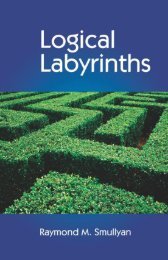Which Alice?
Which Alice?
Which Alice?
You also want an ePaper? Increase the reach of your titles
YUMPU automatically turns print PDFs into web optimized ePapers that Google loves.
Solutions to the Puzzles<br />
miles an hour is one mile in 15 minutes, or 1 1/2 miles in 22<br />
1/2 minutes, so the man just caught the train.<br />
HOW FAR AWAY IS THE SCHOOL? The difference between<br />
being 5 minutes late and being 10 minutes early is a difference of 15<br />
minutes. So the boy will save 15 minutes if he walks at the rate of 5<br />
miles an hour rather than 4 miles an hour. Now, 5 miles an hour is<br />
one mile in 12 minutes, and 4 miles an hour is one mile in 15<br />
minutes, so walking at the faster rate, he saves 3 minutes in every<br />
mile, which is 15 minutes in 5 miles. So the school is 5 miles away.<br />
Let us check: If he walks at 5 miles an hour, he will take one hour. If<br />
he walks at 4 miles an hour, he will take 1 1/4 hours (one hour for<br />
the first 4 miles and a quarter of an hour for the last mile) — which is<br />
one hour and 15 minutes. So there is indeed a 15-minute difference.<br />
IS THIS PUZZLE SAD? Yes, it is a bit sad, in a way, because the<br />
dealer miscalculated: He didn't break even; he lost $20 that day.<br />
Let us see why: Consider first the painting he sold at a 10 percent<br />
profit. He got $990 for the painting; how much did he pay for it?<br />
Now the profit is not 10 percent of $990, but 10 percent of the<br />
amount he paid. So $990 is 110 percent — or 11/10 — of what he<br />
paid. This means he paid 10/11 of $990, which is $900. This<br />
checks, because he paid $900, made 10 percent of $900, which is<br />
$90, so he received $990. Therefore he made $90 on the first<br />
painting.<br />
Now let us consider the second painting: He lost 10 percent of<br />
what he paid for it, so he sold it for 90 percent — which is 9/10 — of<br />
what he paid. Therefore he paid 10/9 of $990, which is $1,100. Does<br />
this check? Yes, because he paid $ 1,100, and 10 percent of $ 1,100 is<br />
$110, so he sold it for $1,100 minus $110, which is $990.<br />
So he lost $110 on the second painting, and gained only $90 on<br />
the first one, so his net loss was $20.<br />
155




